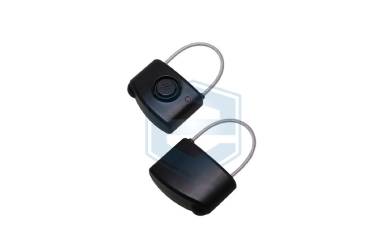In the next 5 years, Security Tags will become the fastest growing industry tags in the industry. More and more retailers and manufacturers are beginning to realize the added value provided by visual anti-theft labels, which is why the demand for security anti-theft labels is increasing.
Although security and anti-theft labels have obvious advantages in protecting goods, some retailers still refuse to invest in such labels. And their refusal to invest is nothing more than the following misunderstandings:
By deploying the source labeling program at the source, retailers can pass this part of the unproductive labor cost to other links in the supply chain, such as manufacturing plants or distribution centers. Store employees do not need to spend time labeling products, which not only ensures the consistency of the products, but also stores employees can spend more time on replenishing and selling products.
Labels can be integrated with existing packaging production lines, and retailers who have deployed this solution have confirmed that this project helps reduce wastage and generate additional value in the supply chain, such as increasing sales and reducing shelf shortages event.

Anti-Theft tag
ECR did a survey: every 1% increase in shelf availability can help increase sales by 0.5%. Loss prevention professionals believe that security anti-theft labels are not only anti-theft, but also a comprehensive solution that adds extra value to store operations. After deploying this plan, more merchandise will be offered to honest shoppers on the shelves, ultimately achieving an increase in sales.
More importantly, with the availability of a large number of RFID Tags, retailers have also obtained tools to optimize the consumer experience. Asset tracking based on RFID technology provides retailers with the real-time status of commodities in the supply chain, and retailers can accurately determine the location of commodities. This solution can be deployed either in a distribution center or in a store warehouse; as long as a handheld reader is used, store employees can quickly locate the required products, which is very important for the replenishment process.
For retailers, loss caused by theft is more like a double-edged sword. It is very important to maintain the balance between the good and clear brand to attract consumers and deter potential shoplifters. Open displays can help increase sales, but it can also facilitate theft by dishonest customers.
Labels are now smaller, more accurate, and more versatile than ever. Suppliers can combine product brands and security solutions, and retailers can design and manage label placement. The visual safety information is integrated with the product packaging to ensure that the brand information is still conspicuous to consumers; and the label is placed in the best detection position to ensure that consumers can check out faster and optimize consumers Satisfaction.
A clear understanding of the amount of wasted is a prerequisite for the execution of the project, and it is very important to accurately predict the products on which the label will get a high return on investment, including inaccurate inventory, time spent by employees looking for products, and shortages Lost orders caused by the phenomenon.
When it comes to cost, a project that is completely deployed at the source can quickly see its value. The source labeling program has been proven to reduce external losses by 50%, while ensuring the availability and open display of goods.
In addition, it is worth introspecting that store employees did not use Anti-Theft Equipment correctly; compliance operations and staff training time are also one of the pain points related to store security and anti-theft labels. In any case, as long as the goods entering the store are equipped with anti-theft labels, the retailer can simplify the store process, reduce errors and improve the efficiency of employees, and ultimately achieve a high return on investment.
Previous: Fingerprint Door Locks Lead High-Quality Life
Next: The Difference between Medical Surgical Masks and Protective Masks
Copyright:@2020-2021
Comments Please sign in or sign up to post.
0
0 of 500 characters used